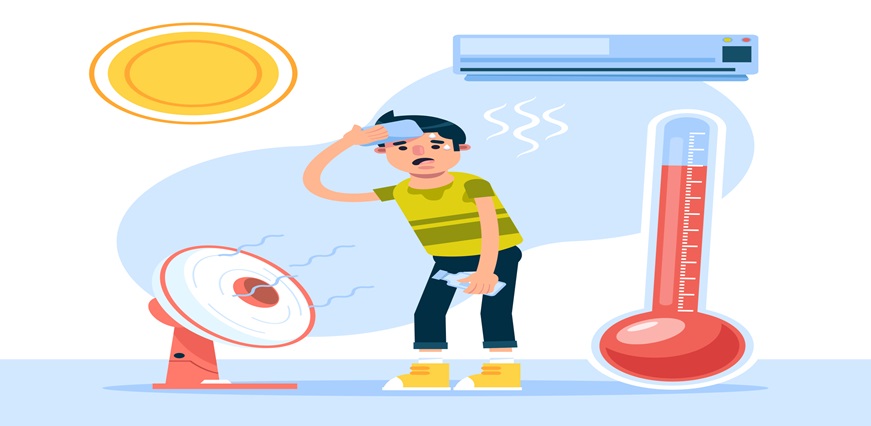If an individual is experiencing redness, itching, or irritation in their eyes, they may have been affected by conjunctivitis, commonly known as eye flu. This prevalent condition, also referred to as viral conjunctivitis, can stem from various viruses and affects millions of individuals every year. The symptoms can range from mild to severe and sometimes even lead to temporary vision impairment. In this blog post, we'll discuss the causes, symptoms, and treatments for eye flu, as well as tips on how to prevent it from spreading further. So, let's dive in and learn more about this contagious eye infection.
What is Eye Flu?
Conjunctivitis, commonly referred to as "eye flu" or viral conjunctivitis, is a highly contagious infection that affects the outermost layer of the eye and the inner surface of the eyelids. It is primarily caused by adenoviruses, although other viruses such as herpes simplex virus, varicella-zoster virus, and picornaviruses can also lead to the condition. The infection can be transmitted through direct contact with an infected person's secretions or indirect contact with contaminated surfaces. Eye flu symptoms include redness, itching, tearing, and discharge from the eyes, and in some rare cases, it can also be associated with upper respiratory tract infections.
Causes of Eye Flu
Viral conjunctivitis, or eye flu, is an infectious condition characterised by inflammation of the conjunctiva. Here are some of the primary eye flu causes:
- Neonatal Conjunctivitis: Newborns may acquire conjunctivitis during birth if their mother has a sexually transmitted infection (STI), such as chlamydia or gonorrhea. This type of conjunctivitis, known as neonatal conjunctivitis or ophthalmia neonatorum, can be severe and requires immediate medical attention to prevent complications.
- Viruses: One of the most common causes of eye flu is viral infections, particularly adenoviruses. These viruses are highly contagious and can spread through direct contact with an infected person or contaminated surfaces.
- Allergies: Allergic reactions to dust, pollen, pet dander, and other allergens can cause eye flu.
- Irritants: Sometimes, exposure to smoke, chemicals, or foreign objects in the eye can lead to conjunctivitis.
- Bacteria: Common bacterial causes may include Staphylococcus aureus and Streptococcus pneumoniae. Although the occurrence of rare, sometimes bacterial infections can also lead to eye flu.
- Poor Hygiene: Not washing hands regularly or touching the eyes with dirty hands can spread viruses and bacteria, leading to infection. In addition, wearing contact lenses for too long or not cleaning them properly can lead to an eye infection.
- Autoimmune Disorders: In some rare occurrences, autoimmune disorders and underlying health conditions like rosacea and Kawasaki disease have been linked to chronic cases of conjunctivitis.
Symptoms of Eye Flu
Symptoms of eye flu can vary from person to person, but the most common ones may include redness, swelling, and itching in the eyes. Additionally, individuals may experience discharge or watery eyes.
- Redness in the white of the eye or inner eyelid
- Increased tearing or watery eyes
- Itchy or burning sensation in the eyes
- Gritty feeling in the eyes
- Discharge from the eyes, which can be clear, white, yellow, or green
- Crusting of the eyelids or lashes, especially after sleep
- Swollen eyelids
- Sensitivity to light
- Blurred vision
If an individual experiences any of these symptoms, it is best to seek medical attention right away. Their doctor will be able to diagnose their condition and provide them with appropriate treatment options.
Treatment for Eye Flu
When it comes to eye flu treatment, the primary goal is to alleviate its symptoms and make the patient feel more comfortable. The treatment usually involves a combination of medications and home remedies. Here are common treatment approaches:
- Artificial Tears: One of the most common eye flu treatments is using artificial tears or lubricating eye drops. These can help keep the eyes moist and reduce discomfort caused by dryness.
- Antibiotics: If the doctor determines that bacteria are causing the eye flu, they may prescribe an antibiotic ointment or drops. It's essential to take these as directed, even if the individual starts feeling better before finishing the entire course.
- Antiviral Medication: In cases where the doctor diagnoses herpes simplex virus or other specific viruses, they may prescribe antiviral medication.
- Antihistamines: If the eye flu is associated with allergies, antihistamines or decongestant eye drops may be recommended to reduce allergic reactions.
With our offerings in line with government-mandated prices, Max Lab offers full-body checkup packages that cover an exhaustive list of tests for a comprehensive health diagnosis. Choose from a variety of health test packages for early detection and treatment of eye flu.
Home Remedies for Eye Flu
Sometimes, home remedies for eye flu are the initial course of treatment to alleviate the symptoms of eye flu. Here are a few home remedies and tips that can help alleviate the symptoms of eye flu:
- Warm Compress: Soak a clean cloth in warm water, wring it out, and place it over the closed eyelids for a few minutes. Doing this the entire duration of eye flu can help reduce discomfort and remove crusting.
- Cold Compress: If the eyes are swollen and itchy, a cold compress can provide relief. Use a clean cloth soaked in cold water and apply it to the closed eyelids.
- Avoid Contact Lenses: Stop using contact lenses until the infection clears up to avoid further irritation.
- Good Hygiene: Wash hands frequently, avoid touching eyes, and do not share personal items like towels, pillows, or makeup.
- Clean Eyelids: Gently clean your eyelids with a clean cloth and warm water to remove discharge.
- Rest: Give your eyes a break from screens and try to rest as much as possible.
Remember, while home remedies for the eye flu can help relieve symptoms, it's essential to see a doctor if the symptoms persist or worsen.
How to Prevent Eye Flu
Implementing preventive measures is crucial to minimizing the discomfort and inconvenience caused due to eye flu. The following are helpful tips for preventing eye flu.
- Maintain Hygiene: Maintaining good hygiene practices, such as washing your hands frequently and avoiding touching your eyes with dirty hands, significantly reduces the risk of eye flu. This helps prevent the spread of bacteria or viruses that may cause eye flu. Additionally, individuals who wear contact lenses are recommended to adhere to proper hygiene practices when handling them. This includes washing their hands thoroughly before touching them, cleaning the lenses regularly as instructed by an eye care professional, and ensuring that the lenses are properly stored and clean.
- Prevent the Spread: Avoid sharing personal items like towels, makeup brushes, contact lenses, or glasses since these can transfer germs from one person to another.
- Cleanliness: Keep your surroundings clean by regularly wiping surfaces such as doorknobs, countertops, light switches, and shared equipment with disinfectant wipes or a suitable disinfectant spray. This practice helps create a safer environment for everyone by minimizing the spread of infectious agents.
- Adequate Ventilation: Ensure adequate ventilation in closed spaces like offices or bedrooms since poor air circulation increases the chances of contracting infections.
When To See A Doctor For Eye Flu
If an individual suspects they have eye flu, it is important to seek timely medical attention from either an ophthalmologist or a primary care physician. In some cases, the duration of eye flu is just a few days because it gets resolved on its own within a few days; in others, it can lead to more severe complications if not treated appropriately and in a timely manner. Prompt diagnosis and treatment are crucial to prevent potential issues and ensure effective recovery. Here are some reasons to consult a doctor for eye flu:
- One of the main reasons to see a doctor for eye flu is if the symptoms persist or worsen over time. This could include increased redness, swelling, pain or discharge from the eyes. In some cases, these symptoms may be a sign of a more severe infection that requires prescription medication.
- Another reason to see a doctor for eye flu is if when an individual develops additional symptoms such as fever or chills. These could indicate that the infection has spread beyond just the eyes and into other parts of the body.
- It is especially important to see an eye doctor right away for individuals who wear contact lenses and develop symptoms of eye flu. People who wear contact lens are at higher risk for developing serious complications from any type of infection in the eyes.
When it comes to eye flu, prevention is the key. One of the most effective preventive measures is to wash your hands regularly, especially before touching your eyes or face. Avoiding touching your eyes with unwashed hands can significantly reduce the risk of contracting conjunctivitis or eye flu. However, should any individual experience any of the symptoms mentioned above, such as redness in the white of the eye or inner eyelid, watery eyes, itchiness in the eyes, clear, white, yellow, or green discharge from the eyes, swollen eyelids, sensitivity to light, blurred vision, etc., it’s essential to get treatment as soon as possible.
Additionally, individuals who wear contact lenses or glasses are recommended to follow proper hygiene practices when handling them. Cleaning the contact lenses as directed by the eye care professional is essential. Regular eye checkups are highly recommended for maintaining good eye health, as they can help detect any potential problems early on, allowing for timely intervention and treatment.













 7982100200
7982100200

























 To reach our help desk call 9213188888
To reach our help desk call 9213188888.png)
Comments
Eye flu